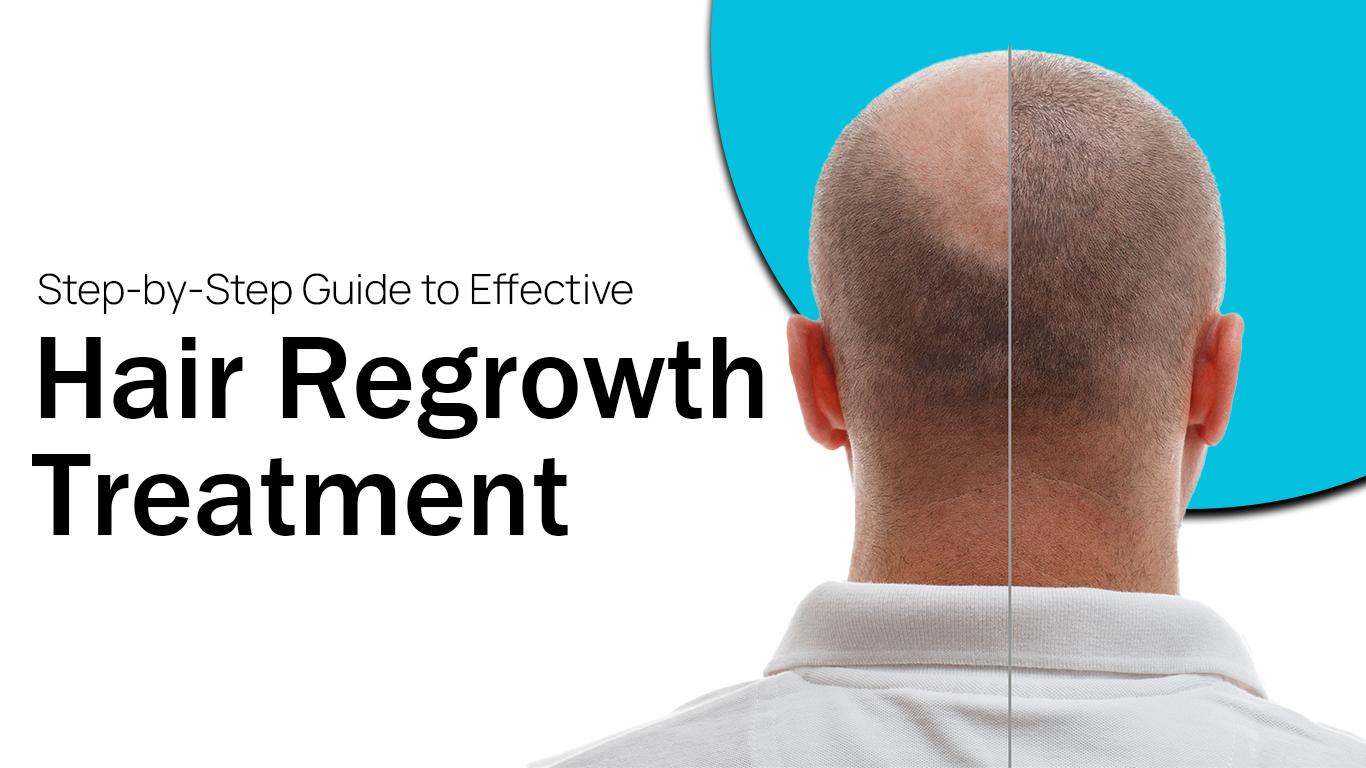
Hair loss can be a distressing experience, but there are many treatments available that can help with hair regrowth . This guide will walk you through the steps to treat hair loss effectively. By following these steps, you can improve your chances of regrowing hair and maintaining a healthy scalp.
Step 1: Identify the Cause of Hair Loss
Before starting any treatment, it’s important to understand why you’re losing hair. Common causes include:
Genetics: Hereditary hair loss, also known as androgenetic alopecia, is the most common cause.
Hormonal Changes: Conditions like pregnancy, menopause, or thyroid issues can cause hair loss.
Medical Conditions: Illnesses such as alopecia areata, scalp infections, or diseases like lupus.
Medications: Some drugs for cancer, arthritis, depression, heart problems, and high blood pressure.
Stress: Physical or emotional stress can trigger hair loss.
Nutritional Deficiencies: Lack of essential nutrients like iron, protein, and vitamins.
Step 2: Consult a Doctor
Once you have an idea of the potential cause, it’s crucial to consult with a healthcare professional. A dermatologist can provide a proper diagnosis and suggest the best treatment options.
Step 3: Choose the Right Treatment
There are various treatments available for hair regrowth. Your doctor might recommend one or a combination of the following:
Medications:
Minoxidil: Over-the-counter topical treatment applied to the scalp. It can slow hair loss and promote regrowth.
Finasteride: Prescription oral medication for men that can prevent hair loss and encourage regrowth.
Spironolactone: Used off-label for women with hair loss due to hormonal issues.
Hair Transplant Surgery:
Involves moving hair follicles from one part of the body (usually the back of the scalp) to the thinning or balding areas.
Laser Therapy:
Low-level laser therapy can stimulate hair follicles and improve hair density.
Platelet-Rich Plasma (PRP) Therapy:
A procedure where your blood is drawn, processed, and then injected into your scalp to stimulate hair growth.
Natural Remedies:
Essential oils (like rosemary or peppermint oil) can promote hair health.
Scalp massage increases blood flow to the scalp.
Proper nutrition, including a diet rich in vitamins and minerals like biotin, zinc, and iron.
Step 4: Maintain a Healthy Scalp
A healthy scalp is essential for hair growth. Follow these tips to keep your scalp in good condition:
Regular Washing: Keep your scalp clean to prevent infections. Use a mild shampoo that suits your hair type.
Avoid Harsh Treatments: Limit the use of heat styling tools, chemical treatments, and tight hairstyles that can damage your hair and scalp.
Exfoliate: Use a scalp scrub or exfoliating shampoo to remove dead skin cells and improve circulation.
Moisturize: Keep your scalp hydrated with conditioners and scalp oils.
Step 5: Be Patient and Consistent9o
Hair regrowth treatments take time. It can take several months to see noticeable results. Be consistent with your treatment schedule and follow your doctor’s advice.
Step 6: Monitor Progress
Keep track of your hair growth progress. Take photos of your scalp regularly to compare and see the improvements over time. If you’re not seeing results, consult your doctor to discuss alternative treatments or adjustments to your current regimen.
Step 7: Address Underlying Health Issues
Sometimes, treating the underlying health issue can help with hair regrowth. For example:
Manage Stress: Practice stress-reducing techniques like meditation, yoga, or exercise.
Balance Hormones: Follow your doctor’s advice on managing hormonal imbalances.
Improve Nutrition: Ensure you’re getting enough nutrients that support hair health.
Step 8: Consider Lifestyle Changes
Certain lifestyle changes can support hair regrowth:
Quit Smoking: Smoking can damage hair follicles and reduce blood flow to the scalp.
Reduce Alcohol Consumption: Excessive alcohol can lead to nutritional deficiencies that affect hair health.
Get Enough Sleep: Quality sleep is essential for overall health, including hair health
Conclusion
Regrowing hair and treating hair loss requires a multifaceted approach. By identifying the cause of hair loss, consulting a healthcare professional, choosing the right treatments, maintaining a healthy scalp, being patient, monitoring progress, addressing underlying health issues, and making lifestyle changes, you can improve your chances of successful hair regrowth. Remember, consistency and patience are key, and it’s important to follow your doctor’s advice throughout your treatment journey.